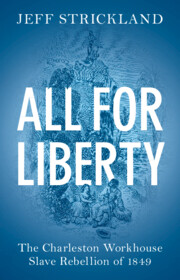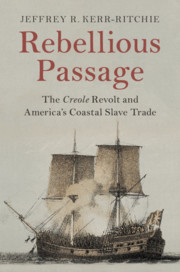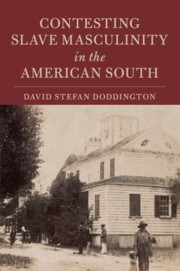American Slavery, American Imperialism
US Perceptions of Global Servitude, 1870–1914
$29.99 (F)
Part of Slaveries since Emancipation
- Author: Catherine Armstrong, Loughborough University
- Date Published: June 2023
- availability: Available
- format: Paperback
- isbn: 9781108701914
$
29.99
(F)
Paperback
Other available formats:
Hardback, eBook
Looking for an examination copy?
If you are interested in the title for your course we can consider offering an examination copy. To register your interest please contact [email protected] providing details of the course you are teaching.
-
Slavery casts a long shadow over American history; despite the cataclysmic changes of the Civil War and emancipation, the United States carried antebellum notions of slavery into its imperial expansion at the turn of the twentieth-century. African American, Chinese and other immigrant labourers were exploited in the name of domestic economic development, and overseas, local populations were made into colonial subjects of America. How did the U.S. deal with the paradox of presenting itself as a global power which abhorred slavery, while at the same time failing to deal with forced labour at home? Catherine Armstrong argues that this was done with rhetorical manoeuvres around the definition of slavery. Drawing primarily on representations of slavery in American print culture, this study charts how definitions and depictions of slavery both changed and stayed the same as the nation became a prominent actor on the world stage. In doing so, Armstrong challenges the idea that slavery is a merely historical problem, and shows its relevance in the contemporary world.
Read more- Considers the global implications of U.S. slavery and demonstrates its relevance to the contemporary world
- Draws on newspapers, cartoons, and popular media to understand the legacy of slavery
- Explains how global trends were key to the economic and cultural aftermath of slavery
Reviews & endorsements
'This important and original interdisciplinary book sheds new light on how the US used slavery to mould its own post-war identity through the rhetorical tool of ‘othering’. Wide-ranging in its theoretical and methodological scope and geographic context, Armstrong successfully draws upon diverse forms of popular culture to decipher how the nation sought to identify itself as an antislavery imperialist power between the ending of the Civil War and the onset of World War I.' Emily West, Professor of American History, University of Reading
See more reviews'In this elegant and deeply-researched book, Catherine Armstrong discusses how Americans came to terms with unfree forms of labour in an era when slavery had been abolished. Overlooking the domestic persistence of unfree labour, many Americans linked the continuation of slavery around the world to non-white ‘others’ that in turn helped to justify the need for white imperialism. This book has powerful resonances for the analysis of modern-day slavery.' Tim Lockley, University of Warwick
‘Drawing astutely on recent scholarship, Armstrong illumines how, from Reconstruction to WWI, Americans manipulated their depictions of slavery, including its perpetrators and victims, to reinforce either a conservative or progressive racial, imperial, or gendered agenda … Recommended.’ J. D. Smith, Choice
Customer reviews
Not yet reviewed
Be the first to review
Review was not posted due to profanity
×Product details
- Date Published: June 2023
- format: Paperback
- isbn: 9781108701914
- length: 297 pages
- dimensions: 230 x 150 x 20 mm
- weight: 0.463kg
- availability: Available
Table of Contents
List of figures
Acknowledgements
Introduction
1. A rhetorical continuum? How representations of antebellum slavery endure in post-war culture
2. Global contexts: how external factors drive US perceptions of slavery
3. Othering the slave owner
4. Othering the enslaved
5. Gender and the rhetoric of slavery
6. Resistance and the slavery counter-narrative
Conclusion
Bibliography
Index.
Sorry, this resource is locked
Please register or sign in to request access. If you are having problems accessing these resources please email [email protected]
Register Sign in» Proceed
You are now leaving the Cambridge University Press website. Your eBook purchase and download will be completed by our partner www.ebooks.com. Please see the permission section of the www.ebooks.com catalogue page for details of the print & copy limits on our eBooks.
Continue ×Are you sure you want to delete your account?
This cannot be undone.
Thank you for your feedback which will help us improve our service.
If you requested a response, we will make sure to get back to you shortly.
×



